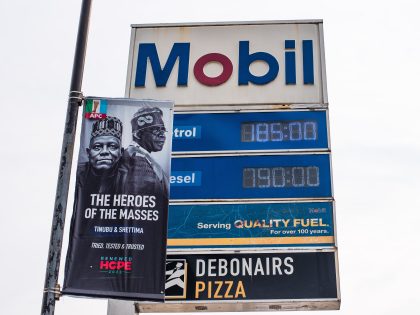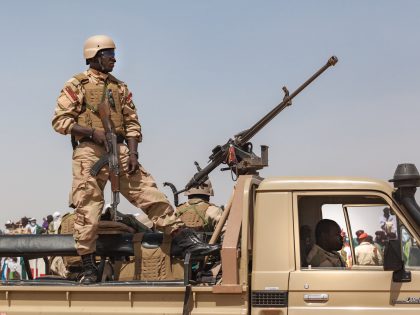Take me to your leader: Eritrea’s Isaias Afwerki
The author, in exile from Eritrea, attempts construct a profile of the country's longtime leader.

Isaias Afwerki. Uncredited.
Despite all that’s been written and spoken about extreme repression and economic blight in Eritrea, surprisingly little has been publicized about its inscrutable leader, Isaias Afwerki, who has led the country with an iron fist since independence in 1991. Based on common knowledge among Eritreans in the country and other information that I have collected over the years from frequent contacts, I am attempting to profile him.
Having closed all independent media and banned international correspondents, President Afwerki rebuilt the national media to exclusively serve his own interests and ambitions. In regular interviews with the state media, he approves all questions beforehand. In the midst of interviews, he often takes over, addressing a single question with lectures that ramble on for 30 minutes or more. The journalists’ only role is to help him transition between topics and occasionally nod in approval or agreement. Once during a pre-recorded interview, one of the “journalists,” Asmelash Abraha, fell asleep during the president’s long reply. In his regular interviews with the state media, Afwerki talks at leisure and analyzes many world developments. During an interview on the national broadcaster, Eri-TV, journalist, Temesghen Debessai, asked the president questions interchangeably in three languages, Tigrinya, English and Arabic. Afwerki talked about a variety of issues, demonstrating his command of language, history and current events for his Eritrean audience.
Afwerki appoints and fires ministers unpredictably and erratically. Journalist Seyoum Tsehaye tells a story about his encounter with Afwerki before he himself was imprisoned (15 years later he is still behind bars). Tsehaye, then director of the newly established ERI-TV, was summoned to the office of the president. The two had a heated exchange, and the president demanded he leave. Before Tsehaye reached his own office, Afwerki had called Tsehaye’s immediate supervisors to effectively freeze him from his job.
Similarly, Andebrhan Welde Giorgis wrote in his book, Eritrea at a Crossroads: A Narrative of Triumph, Betrayal and Hope (2014), that a disagreement he had with President Afwerki when he was governor of the national bank resulted in the sudden appointment of Tekie Beyene to take over his position. He was instructed to vacate his job the same afternoon.
Another example of Afwerki’s arbitrary and abrupt nature in dealing with underlings in his government involved the National Holidays Coordinating Committee. This is the key office that undertakes all national celebrations, including planning and carrying out propaganda. When some of the performances at the Independence Day celebration of May 24, 2010, displeased the president he ousted Zemhret Yohannes, the committee chair and a longstanding executive member of the ruling party.
Later, Afwerki appointed Semere Russom, minister of education, to chair the committee. Barely a year into his term, Russom returned from a trip to China to learn that his position had been taken over by Luel Ghebreab, then chairwoman of the National Union of Eritrean Women (NUEW). Ghebreab herself fell out of favor the next year (both as chair of the holidays committee and chair of the women’s association) and was replaced by Zemede Tekle.
Afwerki is notorious for not providing clear directives when he appoints people to a new position or to launch a big program. Frequently, he meets with people and approves directives while in his car or walking, or when out-of-town on public holidays. Without having adequate knowledge or a full grasp of the new task, newly appointed officials must navigate their way perilously through trial and error.
In the regular cabinet meeting, ministers take turns to present the quarterly or semi-annual reports of their respective ministries through Power Point presentations. All other sensitive issues are handled autonomously by the president and his favorite (at that moment) officials, mainly from the army and security.
Corruption is not only tolerated but encouraged, and the president uses it to buy loyalty. Relatively incorruptible government officials are considered a potential threat, so Afwerki makes sure he appoints loyal subordinates who will report directly to him.
Since the mid-2000s, the president has started a so-called “tour of inspection” that allows him to personally monitor all development projects across the country. During these tours, he advises or instructs private businesses and hands down directives directly affecting these government projects. Disregarding the expertise of professionals or ignoring them entirely, Afwerki approves projects that cost millions. For example, during the second half of the 2000s, all Eritrea was talking about a dam project called Gerset – a name that became ubiquitous in the national media. Afwerki was the sole architect and engineer for the project, which he launched against the repeated advice of professionals. Although the intended goal was irrigation, after Gerset was built, (not unexpectedly) the whole project proved to be a failure. It sustained massive cost over-runs due to the huge cost of pumping water uphill. Fast forward to today, and the whole embarrassing project has faded away from the collective memory.
The Gerset project wasn’t unusual. President Afwerki often takes on massive but under-researched projects that gobble up a significant material and human resources. Some of the most hyped and now totally failed projects of recent years included a cement factory in Massawa; a banana and tomato-packing factory known as “Banatom” in Alebu (with an Italian investor); the Massawa International Airport; the Massawa Free-trade Zone; and a sugarcane farm in Af-Himbol.
Since 2012 these types of projects have been on the increase. As a likely result, the president spends less and less time in his office. Instead he handles domestic issues by phone from his current work place, and leaves international affairs to his political adviser, Yemane Ghebreab.
One recent project to which Afwerki devoted his time was the Kerkebet dam, about five hours west of the capital. With the grand idea of developing drip irrigation, he relocated to the site and spent all his time closely monitoring and supervising construction. Army recruits and construction workers toiled away in three daily shifts, which meant using ample electricity at night (which is unusual in Eritrea).
After the Kerkebet project was finalized in a relatively short time around 2012, Afwerki moved to another, bigger construction site known as Gergera, about an hour’s drive south of the capital.
Gergera Dam – intended to be used as a source of water for most of the country’s southern region and extending to the eastern lowlands – started in the second half of 2013. The project coincided with the new “popular army” scheme of 2012 that required all citizens, including civil servants, to contribute free manual labor. Makeshift tents were erected and food rationed while most civil servants and civilians spent their days collecting stones. Except for ministers, mothers and married women, all nationals including celebrities such as singers and athletes had to provide free manual labor. The president and officials in his favor at that time would closely monitor every development, constantly assessing the level of loyalty shown by the laboring citizens.
As the physical project of Gergera was about to end, Afwerki shifted interest, and in 2014 started yet another similar project, in Adi-Halo, about a half-hour’s drive from the capital. (A simultaneous project, Gahtelay, is in progress in a different location). The president still maintains the tradition of moving his offices periodically. This time he moved his office to Adi-Halo, both working as site manager and running the every-day functions of national government.
In Adi-Halo, President Afwerki has been working tirelessly to adjust government salaries. With a few handpicked and seasonally favored assistants, and of course without any consulting professionals, he has been employing an unconventional matrix to restructure the salary scale. It consistently fails to meet his expectations. Thus, government employees are earning a disproportionate amount of monthly salary despite the fixed scale. In his traditional New Year’s interview, he acknowledged that this project will take some time.
Afwerki also has been working diligently to manage the financial chaos he himself created. The Eritrean national bank changed its currency note toward the beginning of 2016, as part of a controversial currency replacement program.
Under the program, nationals are only allowed to withdraw up to 5,000 Nakfa of their savings in any given month. It requires that all transactions above 20,000 Nakfa be handled through bank checks despite the fact that checks are not widely used in Eritrea. Only three people in the country can verify and approve a transaction of more than 20,000 Nakfa, which normally takes about one month to complete. With the high inflation rate, 20,000 Nakfa can buy, for example, just one Samsung smartphone.
Afwerki enjoys and never misses the endless commemorations of major battles that the nation celebrates with great fervor. All top government officials are expected to suspend their work and leave town for days to accompany him. During these junkets, in the midst of his endless jokes and ridicule/praise, officials get a feel for their current status with the president.
In addition to the routine public ridicule and humiliation most officials undergo, President Afwerki is known for physically assaulting top government officials including ministers or national figures, such as journalists. His character is taken as the model and it trickles down the lowest ranks.
Having effectively demolished all public institutions and structures, Afwerki’s character and his legacy will take a generation to fix. As he frequently utters in some private occasions, however, is unfazed. The “country is his sole creation whose existence depends on his personal whim.”



















